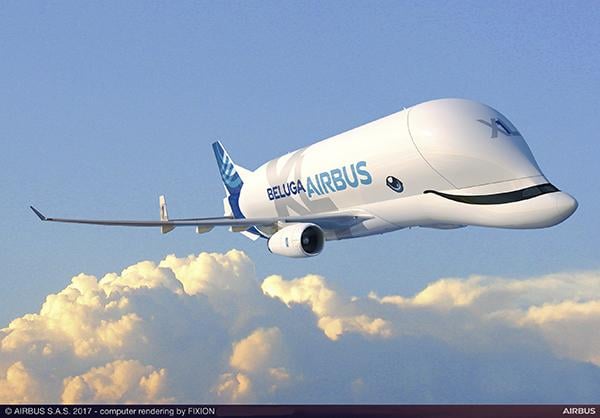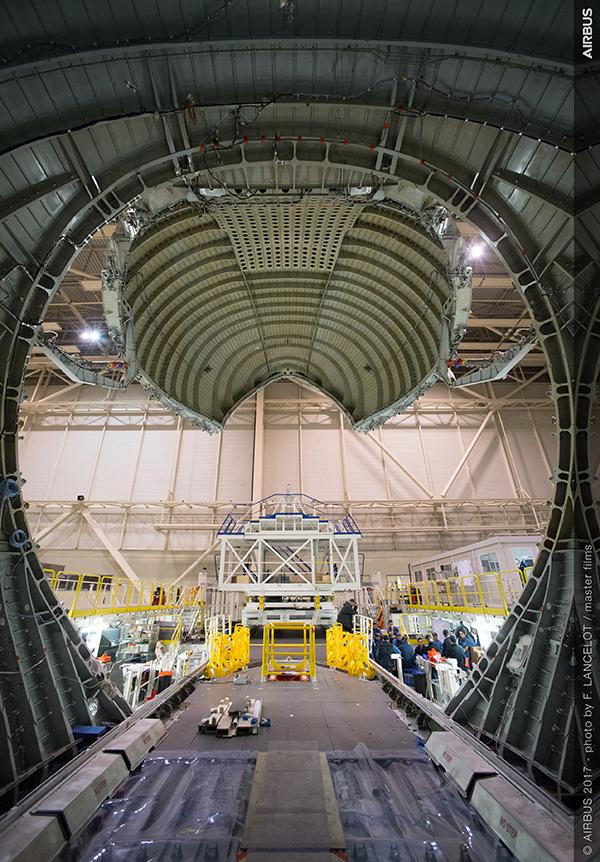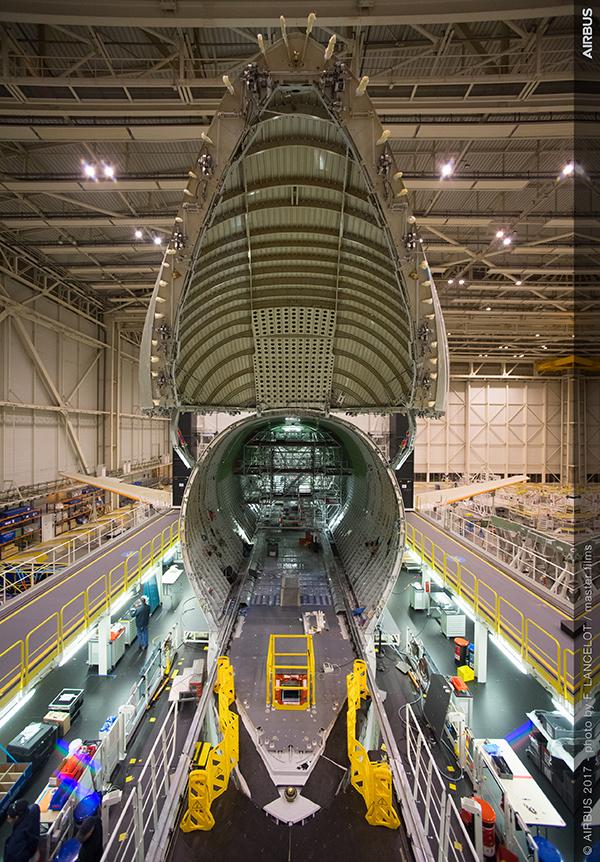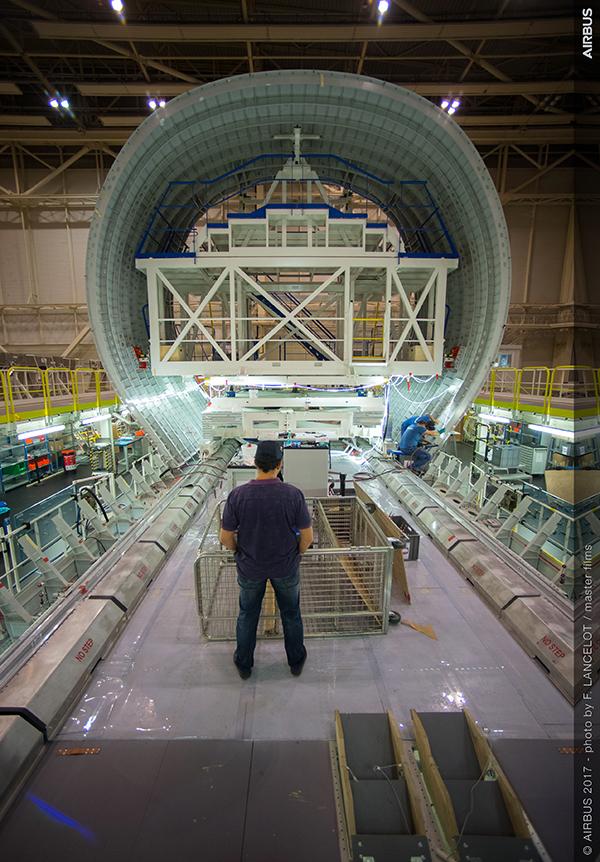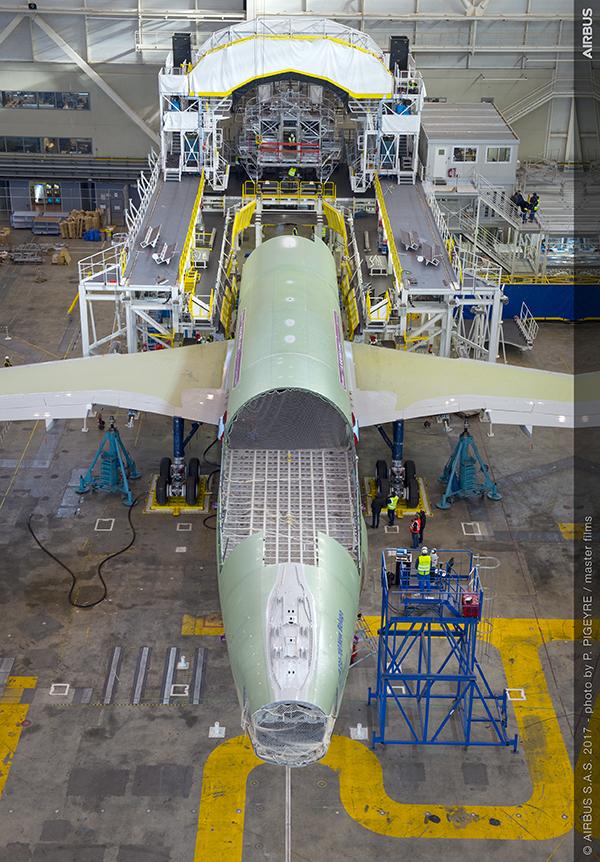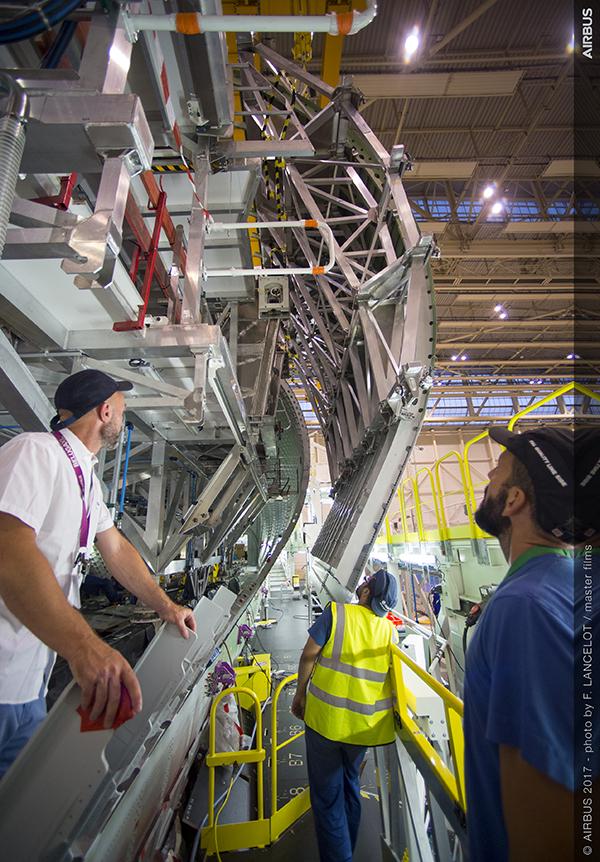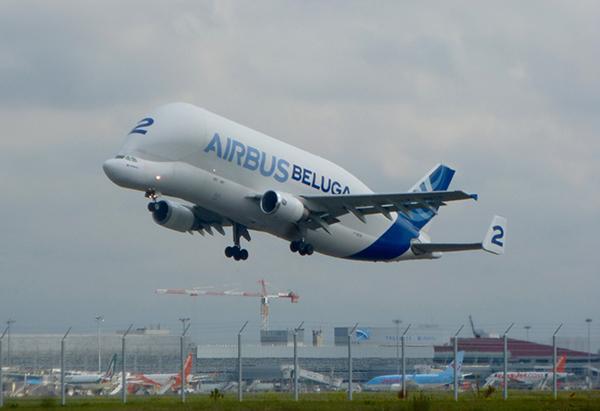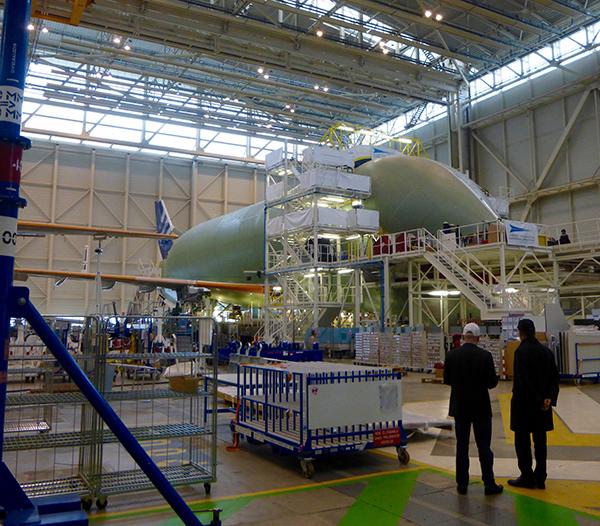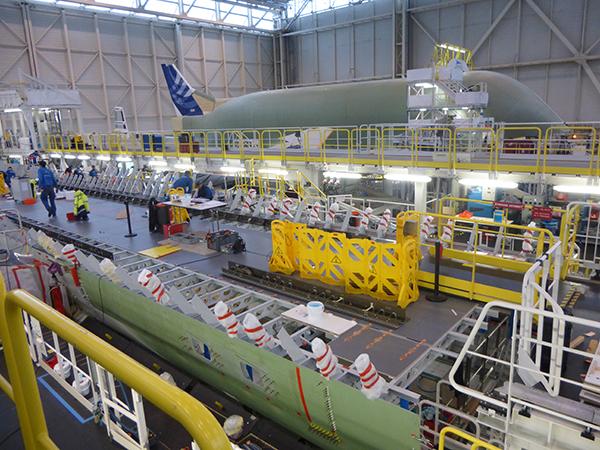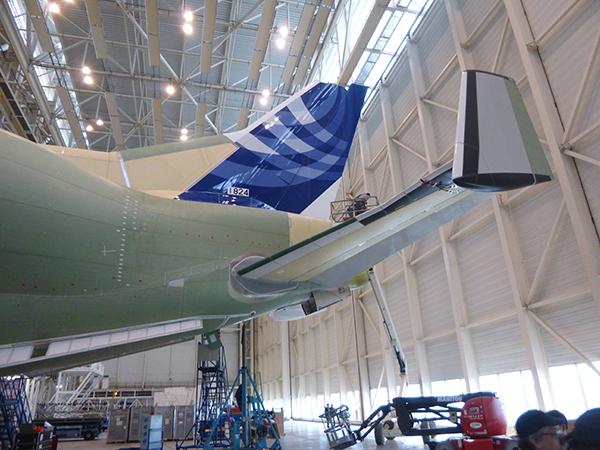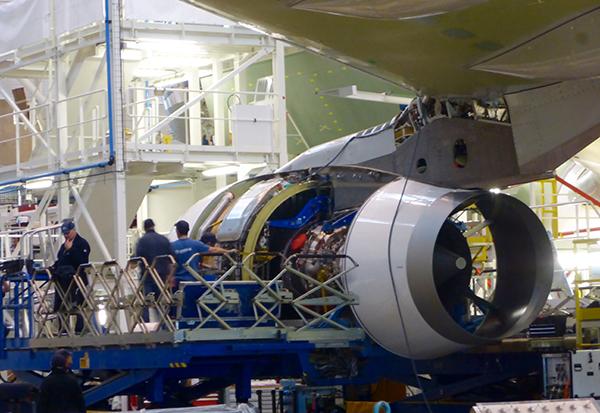Gallery: First Airbus BelugaXL transporter under construction
March 23, 2018The BelugaXL is the successor of the current generation of Beluga, the BelugaST. The program was launched in November 2014 to address the transport capacity requirements in view of the A350 XWB ramp-up and other aircraft production rate increases. Airbus decided to expand its existing BelugaST fleet with the development and production of five new BelugaXL aircraft, derived from the company’s versatile A330 widebody product line.
Based on the A330-200 freighter with a large re-use of existing components and equipment, the first BelugaXL aircraft is planned to enter service in 2019—operating in parallel with the existing five-aircraft BelugaST fleet. Five BelugaXLs should operate by mid-2022.
ATW correspondent Kurt Hofmann was on site to get a closer look at the production line.
